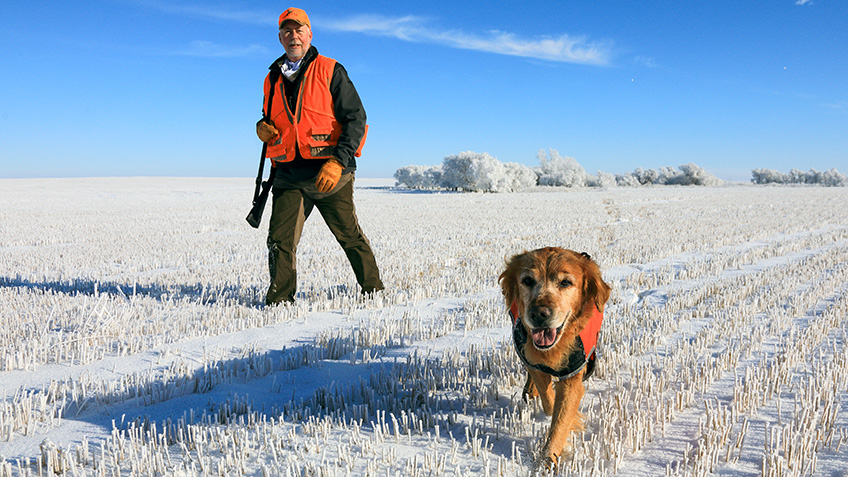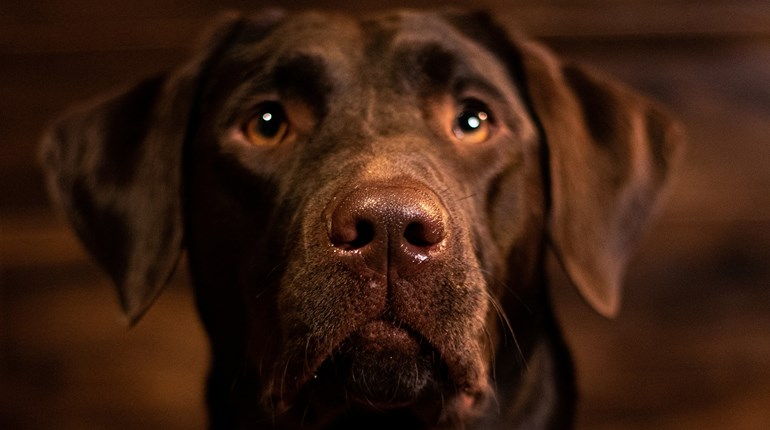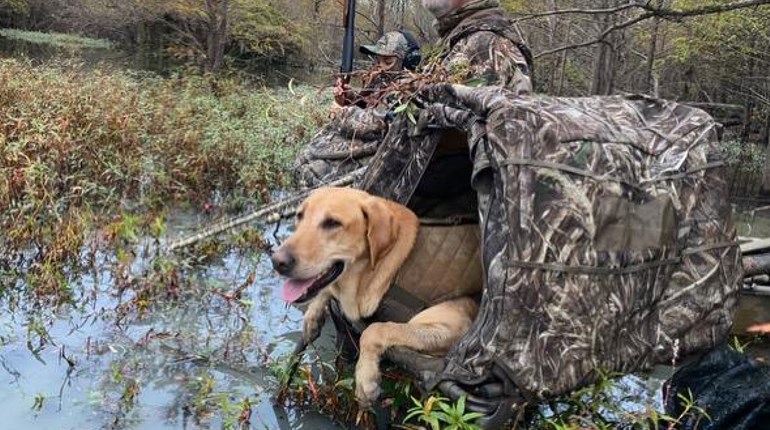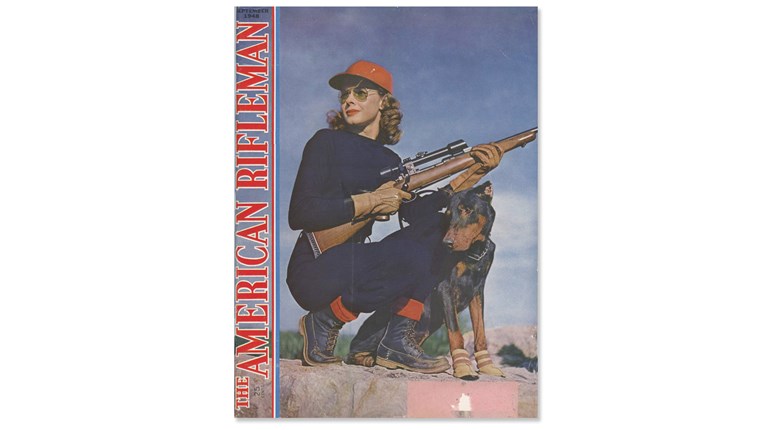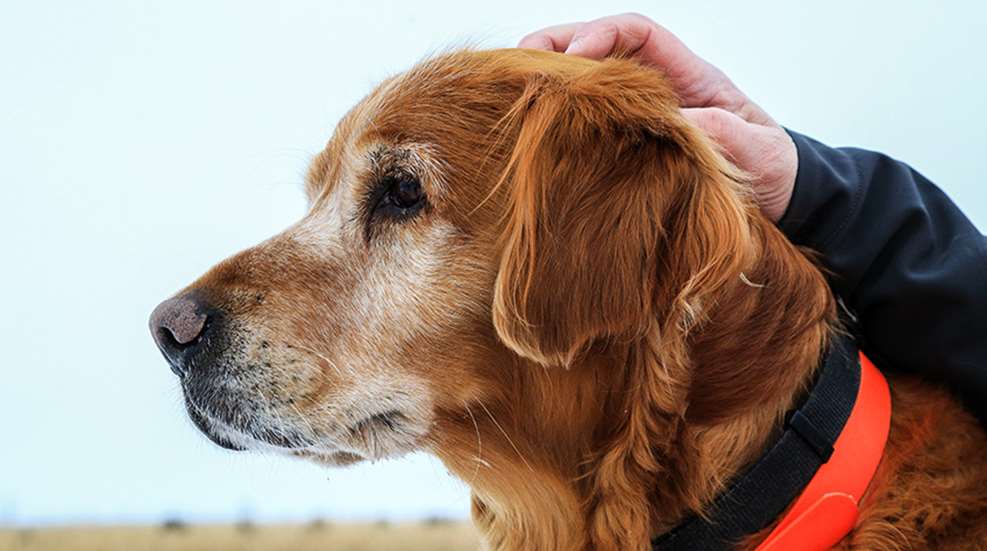
Time is a miserable wretch, and a sly one, too. It comes creeping up on hunters and hunting dogs alike. You’re young and then you’re old. But as Hall of Fame Major League pitcher, Satchell Paige, who hurled his last Major League pitch when he was 59 years old, once said of aging, “How old would you be if you don’t know how old you are?”
That’s how I think my hunting dogs feel about aging, too. They don’t have any idea how old they are, and they don’t care. They live in the moment. How I feel about it is an entirely different matter. I hate watching it happen, but the inevitable acceleration of dog years is our reality. It’s the price we pay for bringing them into our lives.
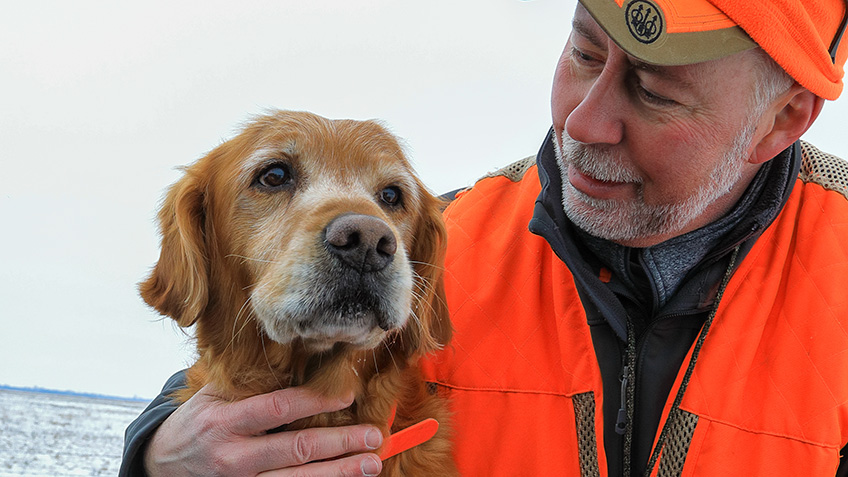
That said, we owe it to our dogs to give them a fighting chance for a long, healthy hunting career, and there are some things you can do to keep them in the game. Most are common sense; some are clinical.
What virtually all dog professionals agree on is that the biggest factor in keeping a hunting dog healthy is weight. A lean dog is far more likely to give you extras years of enjoyment in the field than an overweight dog. And, just as in humans, a fat dog is far more likely to injure itself through over-exertion.
There are two ways to keep your dog lean and ready to hunt and you already know them: diet and exercise. Both are critical if you want to keep your old dog hunting.
Diet is the easy one to control. Older dogs require less fat and more protein. That’s why dog food companies produce special blends for older dogs. It’s still up to you to limit the quantity they eat, however. Humans are suckers for puppy eyes, and we tend to give in far too easily when our faithful dogs plead for more. Stay strong. All dogs will beg if they’re allowed to. They’ll overeat, too. It’s entirely up to you.
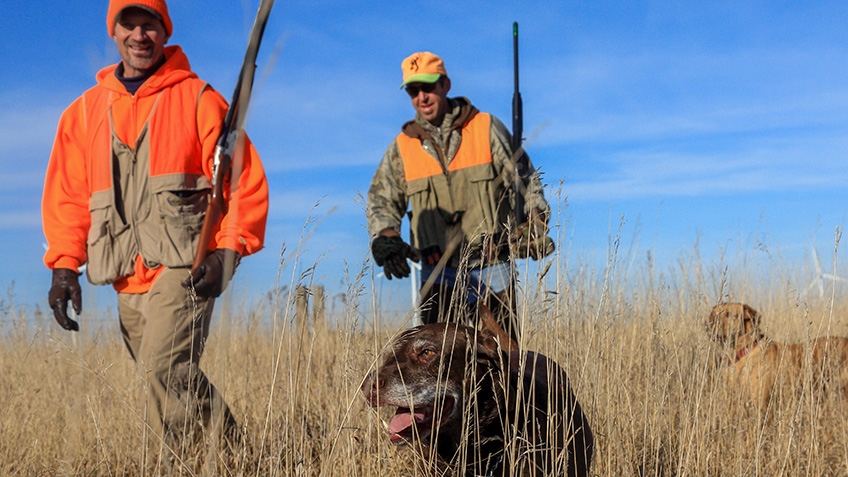
Veterinarian Greg Windschill, who happens to be one of my hunting buddies, says that another consideration is hydration. This is true for all hunting dogs—they rarely take in enough fluids while they’re hunting—but it’s especially important for older dogs, so during hunts Dr. Windschill mixes water in with the normally dry food he feeds his dogs. “The more fluids they can take in during a hunt the better,” he says.
Exercise is trickier, largely because it requires more effort on your part. Daily exercise is important, but anything that gets them moving is beneficial. Swimming is a great choice for older dogs, as are regular brisk walks. With older dogs, however, you must be smart about it. We all know that dog’s hearts are bigger than their brains sometimes.
Many, if not most, hunters will tell you their dogs don’t have an “off switch” when they’re put into the field. They will always give 100 percent of themselves because that’s the only percentage they know. But 100 percent may be too much, and it’s up to you to think for them. Anticipate situations where your older dog might put itself into trouble through shear exuberance.
While hunting pheasants, my old black Lab, Elsie, once jumped a fence and landed smack dab in the middle of a coil of rusting barbed wire. She struggled to free herself from the tangle before I could get to her and many stitches were required to fix that little snafu. When she was young, she would have cleared the fence, the coiled wire and the old pick-up truck parked in the yard, too. But those days were gone, and I let her desire to hunt roosters get the best of us both.
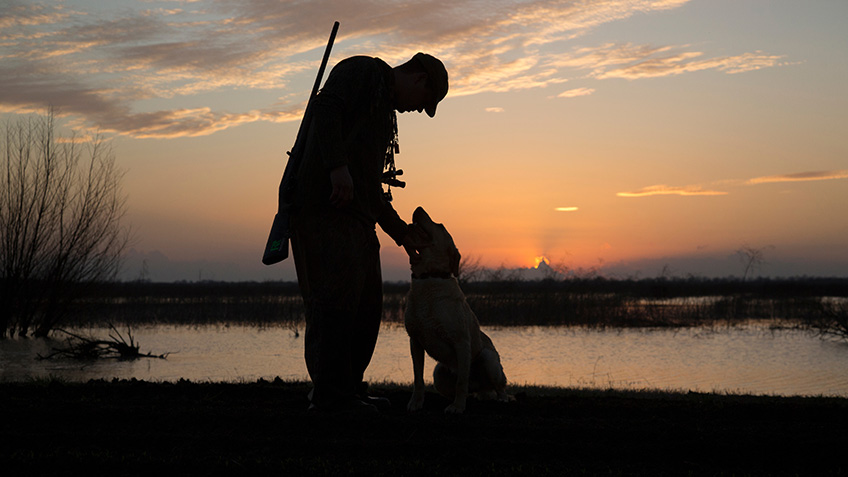
Likewise, sending a hunting dog into an icy river can have different consequences when the dog is 10 or more years old. Remember, age comes quickly. When she was nine, I wouldn’t hesitate to send my now 12-year-old yellow Lab, Rosie, across a rushing stream after a downed bird. These days I debate each shot. Before I pull the trigger, I weigh the potential consequences of sending the dog. Does that decision-making delay cost me game sometimes? Yes, it does! But who cares when it might cost the life of a dog.
Besides protecting them from themselves, a basic health protocol should be followed. For hunting dogs, Dr. Windschill recommends an annual physical with bloodwork as the least you should do. “Many potential health problems can be caught early on with screening for kidney and liver issues,” he says. Potential electrolyte imbalance, nutrition deficiencies and internal parasites can also be revealed in an annual physical.
If your dog is essentially healthy, but slowing down with age, there are active measures you can take to help. According to Dr. Windschill, “Many dogs will develop arthritis as they age, but as long as there are no metabolic issues, there’s no reason not to hunt them.” That’s no different than in people, as he points out: “I was sore and stiff after our [pheasant] hunt yesterday, but I’m still going to do it again today. So are my dogs.”
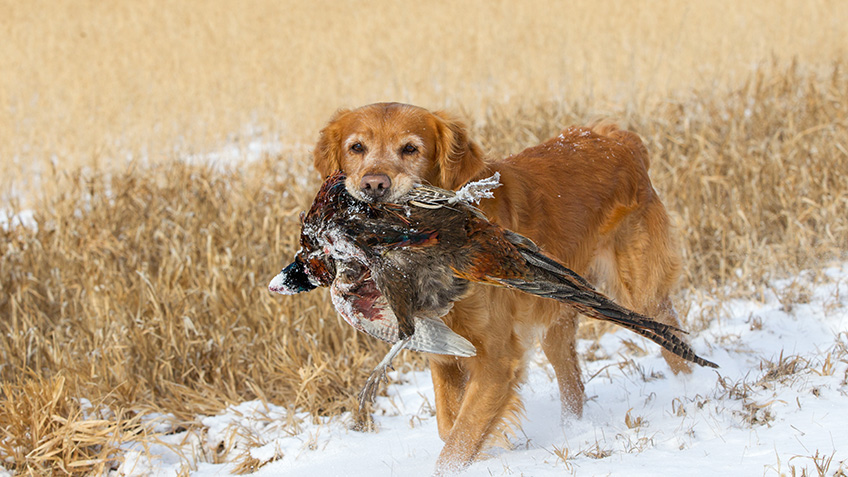
This is where non-steroidal anti-inflammatory drugs (NSAIDs) can do wonders. I know from personal experience that Rosie, my yellow Lab, would have been finished hunting years ago if my veterinarian hadn’t prescribed first Rimadyl, and later Deramaxx, to combat her osteoarthritis (OA). I start her on the prescribed dosage before we ever leave on a hunt and she performs better in the field and rebounds quickly because of it.
Joint supplements can also help slow down the effects of arthritis. Glucosamine is the most popular supplement, and it can be combined with Chondroitin and Omega 3 fatty acids to help your dog maintain its mobility and activity levels year-round. When arthritis flares, NSAIDs can help even more. Combining supplements, NSAIDs and a healthy weight are the easiest ways to maintain a hunting dog that can still hunt at the age of 10 and older.
Beyond those treatments, if your dog still isn’t huntable due to arthritis, your veterinarian might try injections of steroids, hyaluronic acid or regenerative medicine such as platelet-rich plasma [PRP] or mesenchymal stem cells. Since these methods can achieve a high concentration directly at the joint, it’s more targeted than oral analgesics. Dr. Windschill has seen some promising results using these techniques, but only your veterinarian can determine if it’s warranted for your dog.
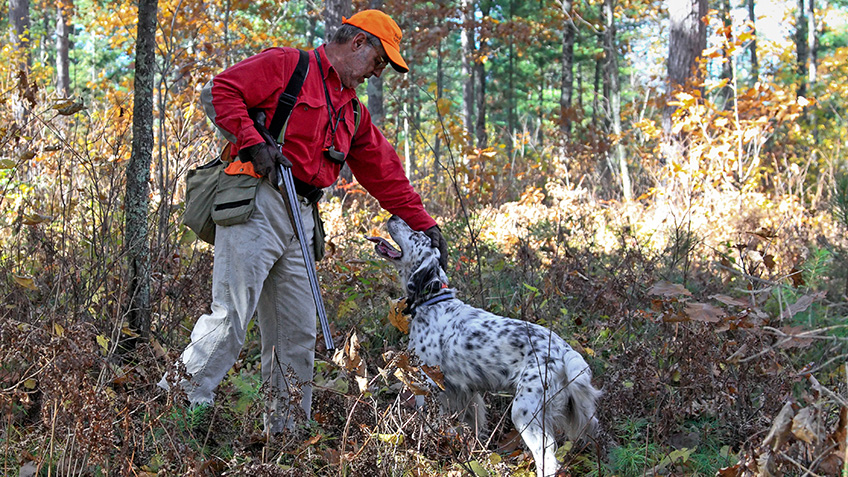
Limiting their time afield is another choice that only you can affect. The best advice I know is to treat them like you would a new puppy. Keep your hunts with an old dog shorter. An hour or two, depending upon the type of cover we’re hunting is enough for Rosie at age 12. And Dr. Windschill suggests keeping an old dog out of the cattails completely. “It’s really hard on them to try busting through that kind of cover,” he says. Since we live in the Upper Midwest, that limits the places I can take my dogs for late-season pheasants, but I’ve seen the effects of snow-choked cattails on my old dogs before.
When Elsie, my black Lab, was 11, I lost her for more than an hour in a drifted cattail slough in North Dakota. We got into some running pheasants and she trailed them into snow-choked cattails so thick that she got hung up and couldn’t extricate herself. I could barely move through the jungle of vegetation and waist-deep snow myself. Following the labyrinth of tracks, I eventually found her, but for a while I was truly worried. I bought a locator collar for her and she hunted two more seasons for me—just not in December cattail sloughs.
With each of my hunting dogs, their hind ends were the first thing to go. If they’re lean enough, you might even notice the declining muscle mass as they age. Exercise, of course, will delay this decline, but it’s not going to prevent it completely. And letting them do things like leaping to and from a pick-up tailgate is likely to lead to a hard fall or preventable joint damage. I start picking them up and placing them where I want them when they’re puppies. That way they’re less likely to bolt from the kennel and jump into trouble later in life.
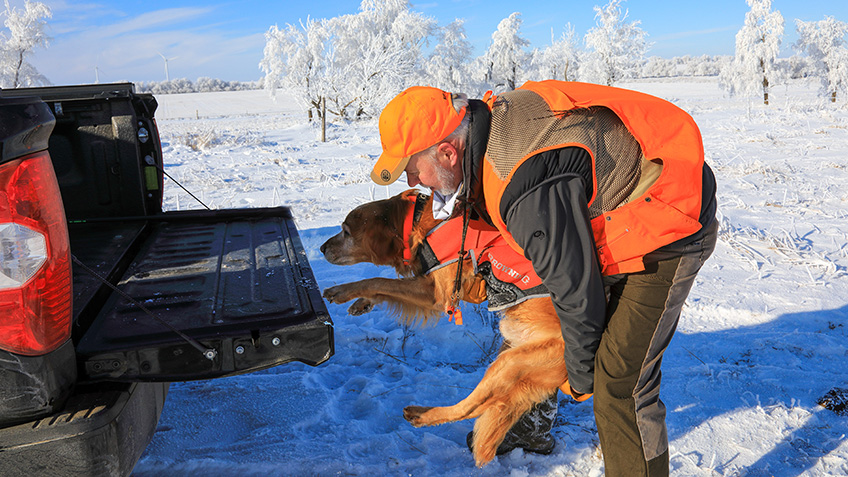
You know your dog better than anyone else. They’ll tell you when they’ve had enough. Make sure you’re paying attention to the signs. But also remember, these animals live to hunt. It’s critical to their well-being that they continue to do so for as long as they’re physically able. Leaving them home is the poorest option available.
Since we started with him, let’s give ol’ Satch Paige a final chance to opine on the matter: "Age is a question of mind over matter. If you don’t mind, it doesn’t matter."
Older dogs don’t mind at all, just so they can keep coming along.
